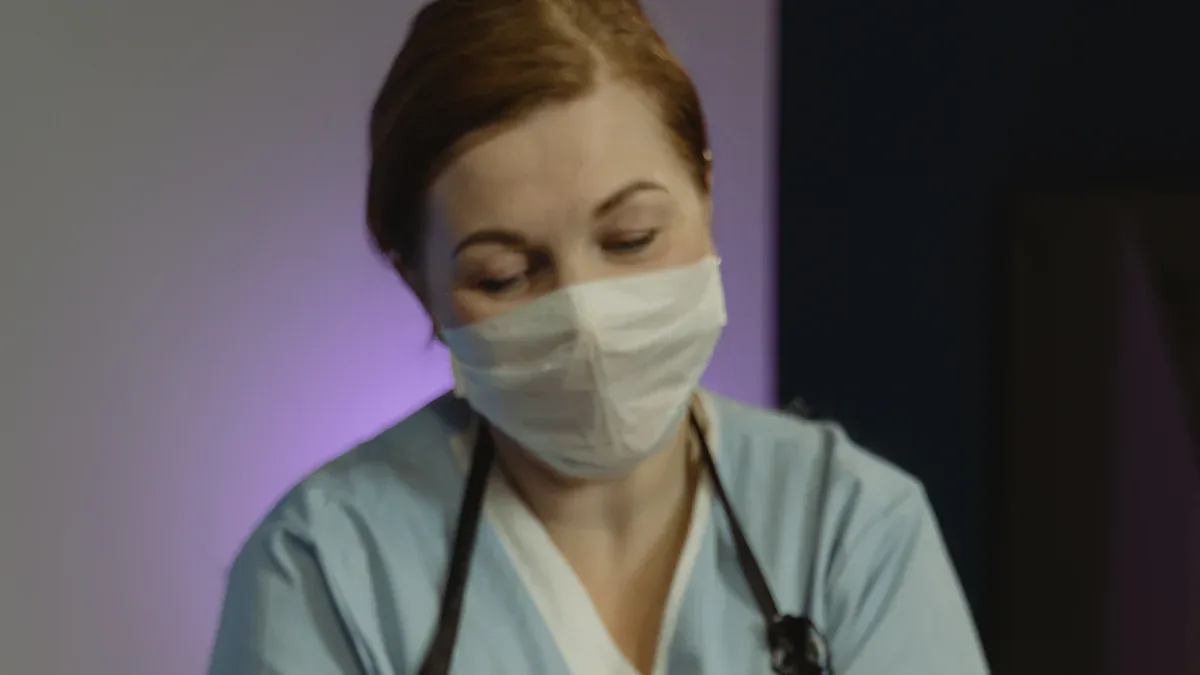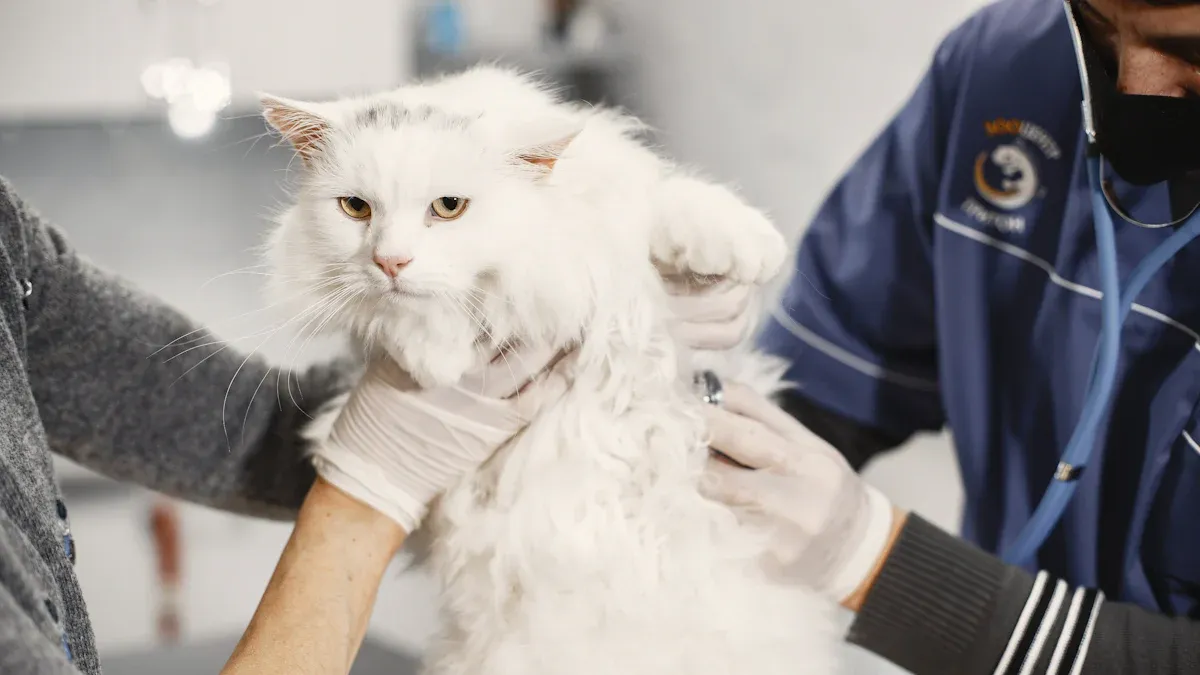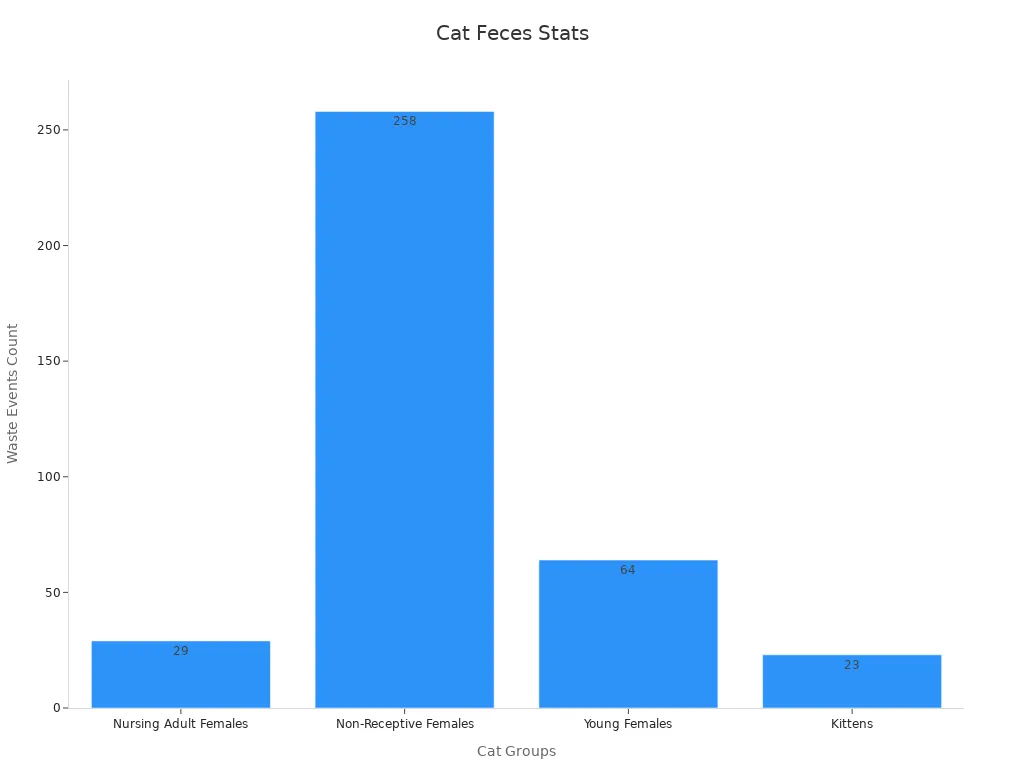How AI Can Help You Spot Cat Health Problems from Poop

AI for cat health gives you a new way to watch for changes in your cat’s poop. You can use smart litter boxes or apps that need only a quick photo. These tools use advanced methods like metabolomic analysis and pattern tracking to spot signs of illness in cats. AI for cat systems can track how often your cat uses the litter box, changes in weight, and even small shifts in behavior. Early alerts from these tools help you get your cat the care it needs faster.
Key Takeaways
AI tools track your cat’s litter box habits to spot health problems early, helping you act fast.
Smart litter boxes and apps collect data like weight, visit frequency, and poop changes for better health monitoring.
Regularly checking your cat’s poop and using AI alerts can catch signs of illness before they get serious.
AI works best when you keep the litter box clean and help the system learn to recognize each cat.
These tools support your vet’s care but do not replace regular vet visits or expert advice.
Why Poop Matters

Signs in Cat Poop
You can learn a lot about your cat by looking at its poop. Changes in color, shape, or texture often show early signs of trouble. For example, runny or watery poop may mean your cat has an infection, parasites, or a food problem. If you see poop that is not the usual chocolate brown, or if it looks very hard or very soft, you should pay attention. Sometimes, poop can even show signs of serious diseases like cancer or autoimmune disorders.
Regularly checking your cat’s litter box helps you spot these changes before they become bigger problems.
Researchers have found that cats have unique bacteria in their poop. Healthy cats have more Actinobacteria, while other animals like dogs have different bacteria. This means that poop can act as a marker for your cat’s gut health. Scientists also found that female cats cover their poop more often when they are nursing or protecting kittens. This behavior shows that poop is important for both health and safety.

Cat Group | Waste Events | Covering Behavior | Meaning |
|---|---|---|---|
Nursing Adult Females | 29 | High frequency | Protects kittens and hides scent |
Non-Receptive Females | 258 | Lower frequency | Less need to hide scent |
Young Females | 64 | Moderate | Some protection, some signaling |
Kittens | 23 | High frequency | Protects nest and siblings |
Early Detection
You can catch many problems early by watching for changes in your cat’s poop. Early signs include diarrhea, blood, or a strong smell. In one study, 44% of cats with chronic gut problems had diarrhea, and over half showed signs of bleeding. These signs often appear before other symptoms, so you can act fast.
Early detection helps you get your cat to the vet sooner.
Tools like the Feline Poop Type Analyzer track poop changes and help your vet find the cause.
Keeping a log of your cat’s poop helps spot patterns and triggers, such as new foods or stress.
Research shows that early detection, especially with new tools and AI, can help slow down diseases and improve your cat’s life. By paying attention to poop, you give your cat the best chance for good health.
AI for Cat Health
Data Collection
Smart litter boxes help you collect health data about your cats. Devices like Petivity and LuluPet track every litter box visit. These systems record your cat’s weight and time in the box. They also note if your cat pees or poops. Some models use cameras and sensors for more details. For example, a Raspberry Pi project uses thermal and NoIR cameras. It can see which cat uses the box and what happens. The system takes pictures and checks temperature changes. This helps you notice patterns in your cat’s bathroom habits.
Smart litter boxes need a short training time. You help the AI learn to tell your cats apart. The system uses body size and coat patterns to spot each cat. Sometimes it uses facial features too. This is important if you have more than one cat. The AI learns to match each event to the right cat. It works even if cats have similar weights. At first, you may need to check some events. The system gets better as it learns.
Tip: Put the litter box where Wi-Fi is strong and make sure it fits your cat. Most monitors work best with boxes no bigger than 21" by 16".
You can see the data in an app or on a website. The system logs each visit and your cat’s weight. It also tracks the type of waste event. If you have more than one box, use a monitor for each one. This keeps the data correct. The poop monitor sends alerts if it finds changes that could mean a health problem.
Petivity usually gives good data, but it can mix up cats if they weigh the same.
Some people have Wi-Fi problems or the system mixes up cats.
The AI learned from thousands of litter box events to set normal ranges.
AI Analysis
After collecting data, AI for cat systems look for health problems. The AI checks for changes in litter box habits. It looks for more visits, weight changes, or different waste types. The system compares new data to your cat’s normal patterns. If it finds something odd, it sends you an alert.
AI models can spot illness by looking at images and sensor data. The system can tell pee from poop by checking timing and behavior. Some advanced systems use thermal images to check body temperature. These details help the AI find early signs of illness. It can spot diarrhea, constipation, or even stress.
A case study shows how a Raspberry Pi system with AI tracks bathroom habits. The system uses Microsoft’s Custom Vision to spot cats. It can tell the difference between urination and defecation. You can look at old data for each cat, like temperature and timing. This helps you and your vet see trends and catch problems early.
AI Solution | Reported Success Rate / Accuracy | Description |
|---|---|---|
Petriage | AI-enabled online pet symptom checker helping owners assess urgency of veterinary care. | |
Zoetis Services LLC | N/A | AI-enhanced Vetscan Imagyst platform for dermatology diagnostics and equine FEC analysis. |
VetCT | N/A | AI tools integrated for teleradiology to improve imaging data acquisition and processing. |
Vetology LLC | Clinically validated AI software | Provides rapid and accurate radiology reports enhancing diagnostic accuracy. |
Studies show AI tools can be very reliable. One study found AI made fewer mistakes than vets with radiographs. Another study showed AI and specialists agreed on heart size in cats. A survey of almost 4,000 vet professionals found they trust AI for diagnosis and treatment.
AI for cat health helps you spot problems early, but it is not perfect.
The system may have trouble if your cats look alike or if the box is too big.
Always check alerts and talk to your vet if you worry.
Note: AI works best if you keep the litter box clean and the monitor working well.
Poop Detection Process

Step-by-Step System
You can use a smart system to track your cat’s health by watching the litter box area. The process starts with data collection. You place a sensor or camera near the box. Some systems ask you to take a photo of the poop. Others use built-in sensors to record every visit. The system logs the time, your cat’s weight, and the type of waste event.
Here is how a typical poop monitor works:
Data Collection
The system records each time your cat enters the litter box. It checks the weight and watches for changes in behavior. Some devices use cameras to take pictures of the poop. Others use sensors to track movement and temperature.AI Analysis
The AI for cat health compares new data to your cat’s normal patterns. It looks for changes in the number of visits, the size of the waste, and the time spent in the box. The AI can spot early signs of illness, such as diarrhea or constipation. It can also notice if your cat stops using the box.Health Tracking
The system keeps a log of all litter events. You can see reports on your phone or computer. The reports show trends in your cat’s weight, litter habits, and waste type. This helps you and your vet find problems early.
Tip: Place the box in a quiet litter box area. This helps your cat feel safe and gives you better data.
Some systems can detect common illnesses with high accuracy. They use thousands of examples to train the AI. The system learns what healthy poop looks like and what signs mean trouble. However, the AI may have trouble if you have two cats with the same weight. It might mix up their data.
Step | What Happens | Why It Matters |
|---|---|---|
Data Collection | Sensors or photos record litter box events | Tracks every visit and waste event |
AI Analysis | AI checks for changes in habits and waste | Spots early signs of illness |
Health Tracking | System logs data and creates reports | Helps you and your vet see patterns |
Owner Alerts
You get alerts when the system finds something unusual. The poop monitor sends a message to your phone or email. You might see a warning if your cat uses the box more often, loses weight, or has a change in poop shape. Some systems let you set your own alert levels.
You can act fast if you get an alert about a possible health problem.
The system helps you track changes over time.
You can share the data with your vet for better care.
Note: AI detection works best when you keep the litter box clean and check the system often. If you have more than one cat, check the reports to make sure the system matches the right cat to each event.
You can trust these alerts to help you spot problems early. However, always watch your cats for other signs of illness. The system gives you extra help, but it does not replace a vet.
Benefits and Limits
Advantages
AI tools for cat health give you many benefits. You can spot health problems early, which helps your cat get care before things get worse. These systems track your cat’s behavior in real time, even when you are not home. You get alerts if something changes, so you can act fast. AI can handle data from more than one cat, making it easier if you have a busy home. You also get health reports that show trends over time.
A study using data from 550,000 cats showed that AI can predict diseases like gum disease and skin tumors with up to 88% accuracy. This means you can trust these systems to help you keep your cat healthy. Some systems, like BeRSTID, use low-cost hardware and work well in shelters. They track cats overnight and do not need expensive cameras. You can use these tools with a regular litter box, making them easy to add to your routine.
AI helps you and your vet work together for better care.
Limitations
AI systems have some limits you should know. They do not replace your vet. Sometimes, the system may mix up cats if they look or weigh the same. Data privacy is another concern. Your cat’s health data needs to stay safe, but not all systems protect it well. Some AI tools cost a lot, which can make them hard to afford. The way AI makes decisions is not always clear, so you may not know why it sends an alert.
AI cannot always understand your cat’s feelings or complex behaviors. It works best as a helper, not as the only way to watch your cat’s health. You should always check alerts and talk to your vet if you notice something wrong.
Benefit | Description |
|---|---|
Early Detection | Find problems before they get serious |
Real-Time Monitoring | Watch your cat’s health anytime |
Multi-Cat Tracking | Handle more than one cat in the same system |
Health Reports | See trends and share info with your vet |
AI tools make it easier for you to watch your cat’s health by tracking changes in poop. Choose a system that feels easy to use and gives clear alerts. Look for features like multi-cat tracking and simple reports. Always share your findings with your vet.
Remember: AI helps you care for your cat, but it does not replace expert advice. The future of pet health technology looks bright and full of promise!
FAQ
How does AI know which cat used the litter box?
AI uses cameras, weight sensors, and pattern recognition. It checks your cat’s size, coat, and sometimes face. You help the system learn by confirming events at first. Over time, the AI gets better at telling your cats apart.
Can AI tools replace regular vet visits?
No, AI tools cannot replace your vet.
You should use them as helpers. They spot early signs, but only a vet can diagnose and treat health problems. Always talk to your vet if you get an alert.
What should I do if the AI sends a false alert?
Stay calm. Check your cat for any signs of illness. Clean the litter box and reset the monitor. If alerts continue, contact customer support. You should always trust your own judgment and call your vet if you feel worried.
Is my cat’s data safe with these systems?
Most companies protect your data with encryption. You should read the privacy policy before you buy. Choose a system with good reviews about data safety. Never share your login or personal details with others.
Do I need special litter for smart litter boxes?
Most smart litter boxes work with regular clumping litter.
Some brands suggest certain types for best results.
Check the user manual before you buy new litter.
Tip: Using the right litter helps the AI track your cat’s health more accurately.
See Also
Creating An AI Dietitian Using DeepSeek Without Coding
Momen Marketing Team Shares AI Data Analysis Bot Case
Ways To Enhance The Accuracy Of AI Responses
